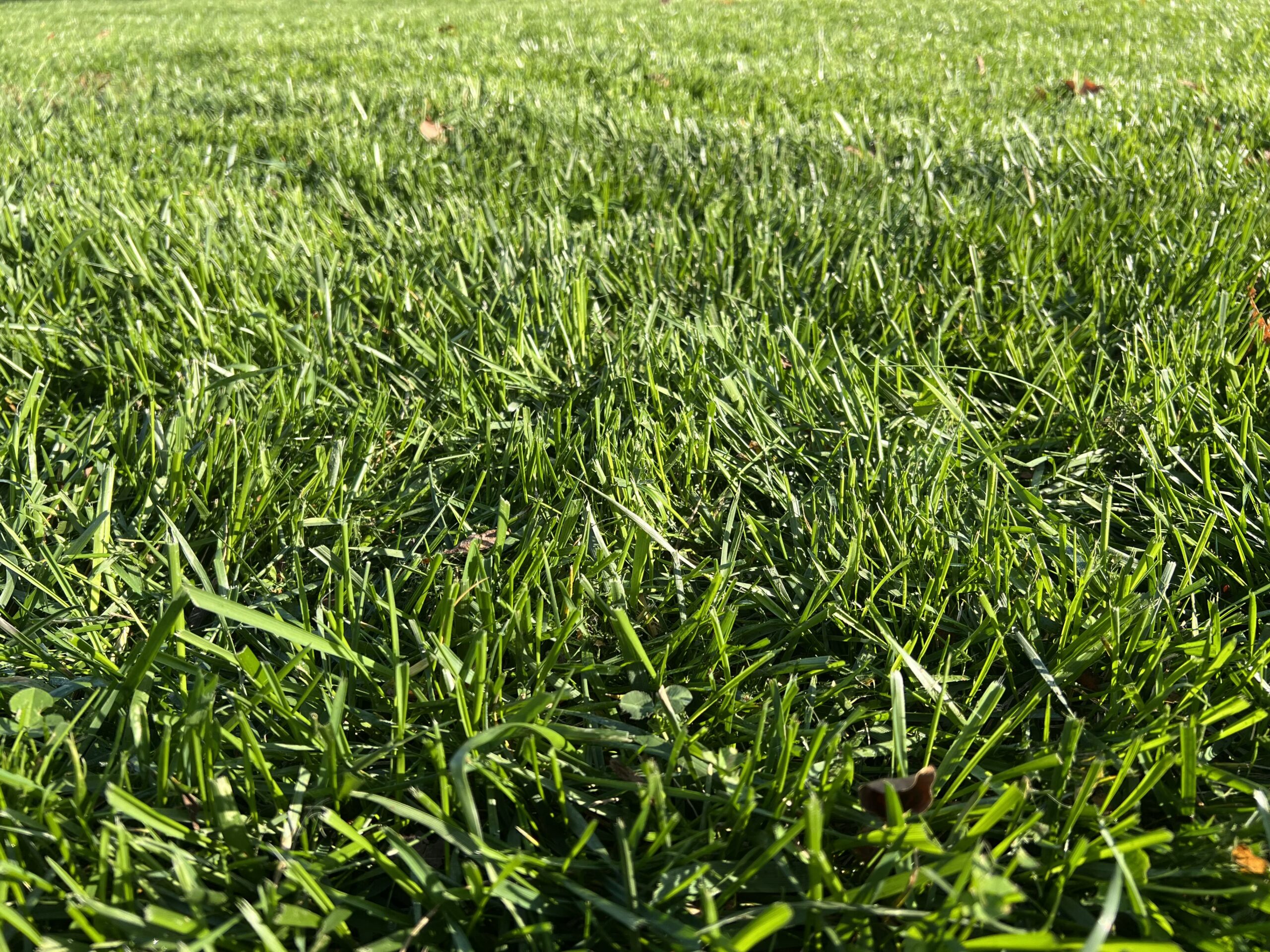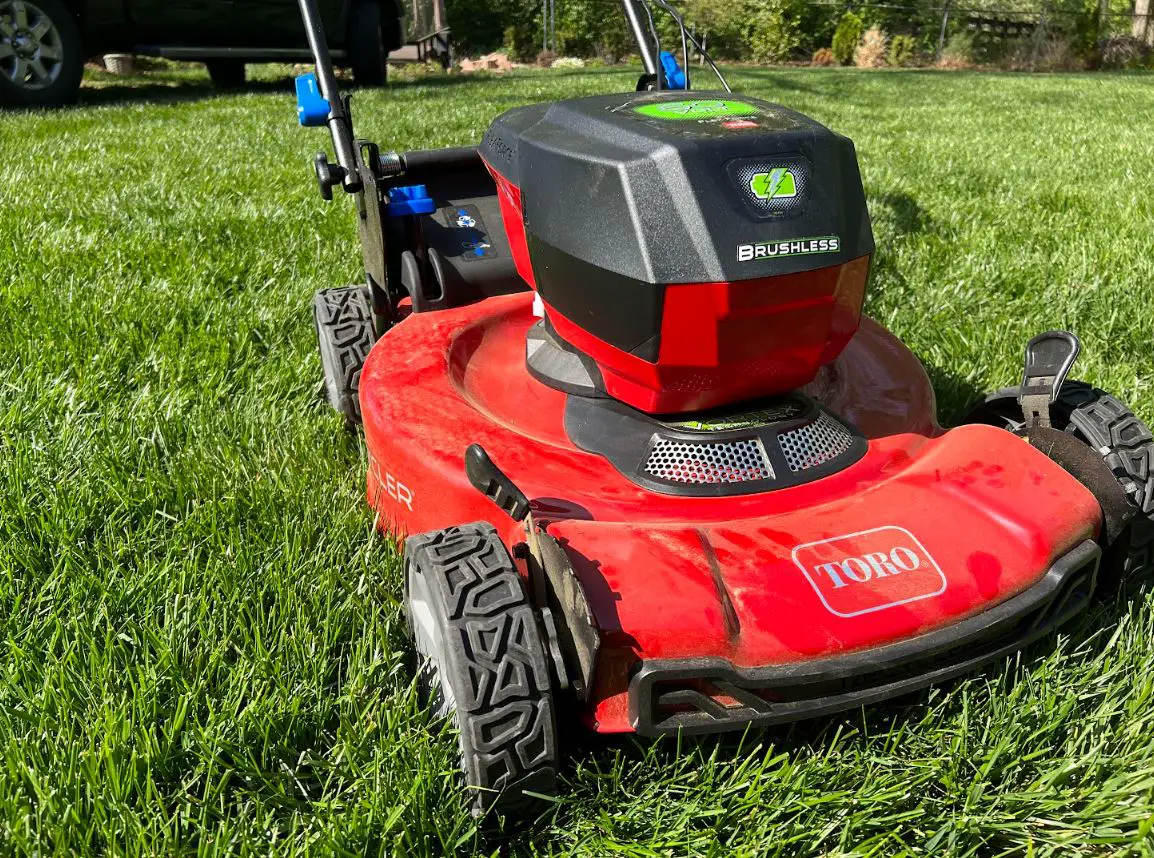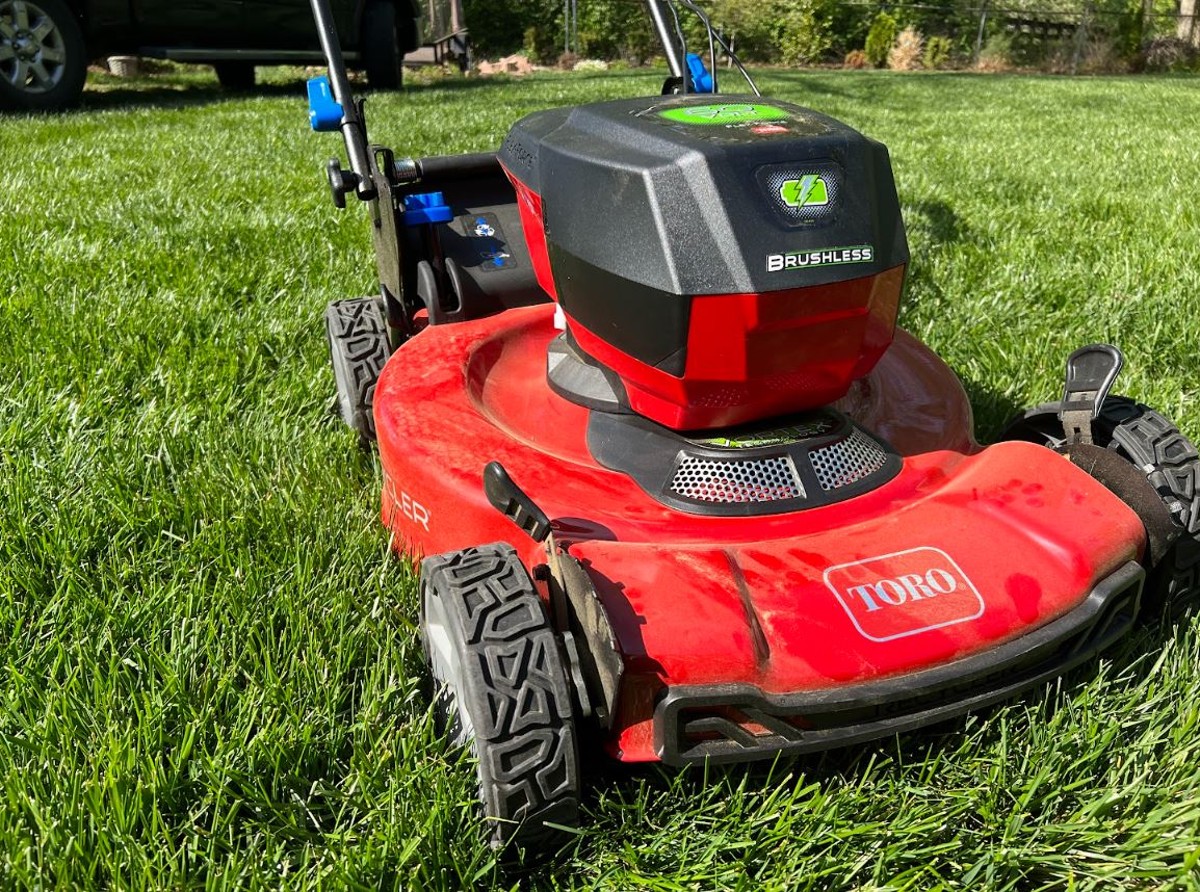Drop spreaders and broadcast spreaders are the two most popular ways to get fertilizer or other soil amendments across your lawn. Most folks go straight to broadcast spreaders, but drop spreaders are the dark horse in this battle.
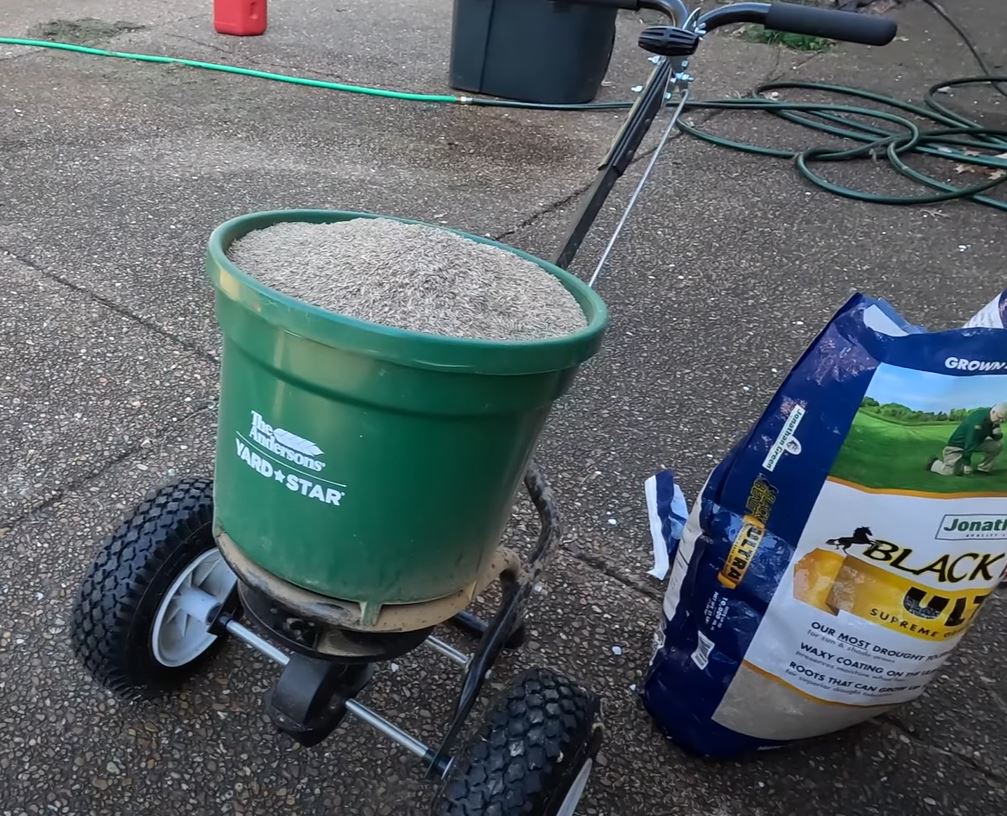
They’re both great solutions, but I would consider one to be for “Type A” people and the other more for “Type B”. Let’s figure out which one you are.
Drop Spreaders
Drop spreaders, also known as granular spreaders or fertilizer spreaders, are used to evenly distribute granular materials like fertilizers, seeds, and pesticides to your lawn.. They do this by releasing the material through holes or slots in the bottom of the spreader as it’s pushed forward.
It looks almost like a paper shredder except with seeds sliding down and dropping out in a neat little fashion.

These are less common than broadcast spreaders and often used for things like golf courses or other commercial projects. They make some of these for homeowners and residential use and they’re great for those of us that are “Type A”. For example, my wife would absolutely love one of these.

Benefits of drop spreaders
One of the main perks of using a drop spreader is the precise and even application it gives. The substance goes straight to the ground and isn’t as affected by wind or other factors. This makes drop spreaders especially useful for applying materials that need a specific application rate, like fertilizers and pesticides.
Additionally, drop spreaders typically waste less fertilizer and/or seed than broadcast spreaders. Broadcast spreaders use a spinning mechanism to throw the material out in a wide arc, which can lead to lots of waste if the spreader isn’t calibrated properly. With drop spreaders, there is less chance of waste because the material is only released when the spreader is moving.
Downsides to drop spreaders
Although drop spreaders have a lot of benefits, they do have some downsides compared to broadcast spreaders. One major limitation is their coverage area. Because the material is released through holes or slots, it can only cover a small area at a time. This means it might take longer to treat a larger area with a drop spreader than a broadcast spreader.
Drop spreaders may also not work well with all types of materials, like large seeds or pelletized fertilizers that may not fit through the holes or slots.
Pros and cons of drop spreaders summarized
When you’re going for a drop spreader, it’s important to understand that you’ll be more accurate, but spend more time outside (not a bad thing!).
Pros of drop spreaders:
- Precise application
- Less waste
- Easier to understand settings
Cons of drop spreaders:
- Smaller coverage area
- Not compatible with all fertilizer types
Overall, drop spreaders are great for getting a precise and even application of granular materials. They offer more even distribution and less risk of waste than broadcast spreaders.
Best Drop Spreaders For Lawns
Below are our two favorite drop spreaders. We picked them because of their price and ease of use. They are two of the only residential drop spreaders I’ve seen available online. I’d go into a deep explanation of both, but honestly they’re very similar and have pretty basic functionality.
- Scotts 76565 Turf Builder Classic Drop Spreader (cheaper)
- Yardworks 75lb Drop Spreader (more expensive but a bit nicer)
Broadcast Spreaders: An Overview
Broadcast spreaders, also known as rotary spreaders, are used to distribute granular materials such as fertilizers, seeds, and pesticides over your lawn or garden. These spreaders work by using a spinning mechanism to fling the material out in a wide arc, covering your large lawn more quickly.
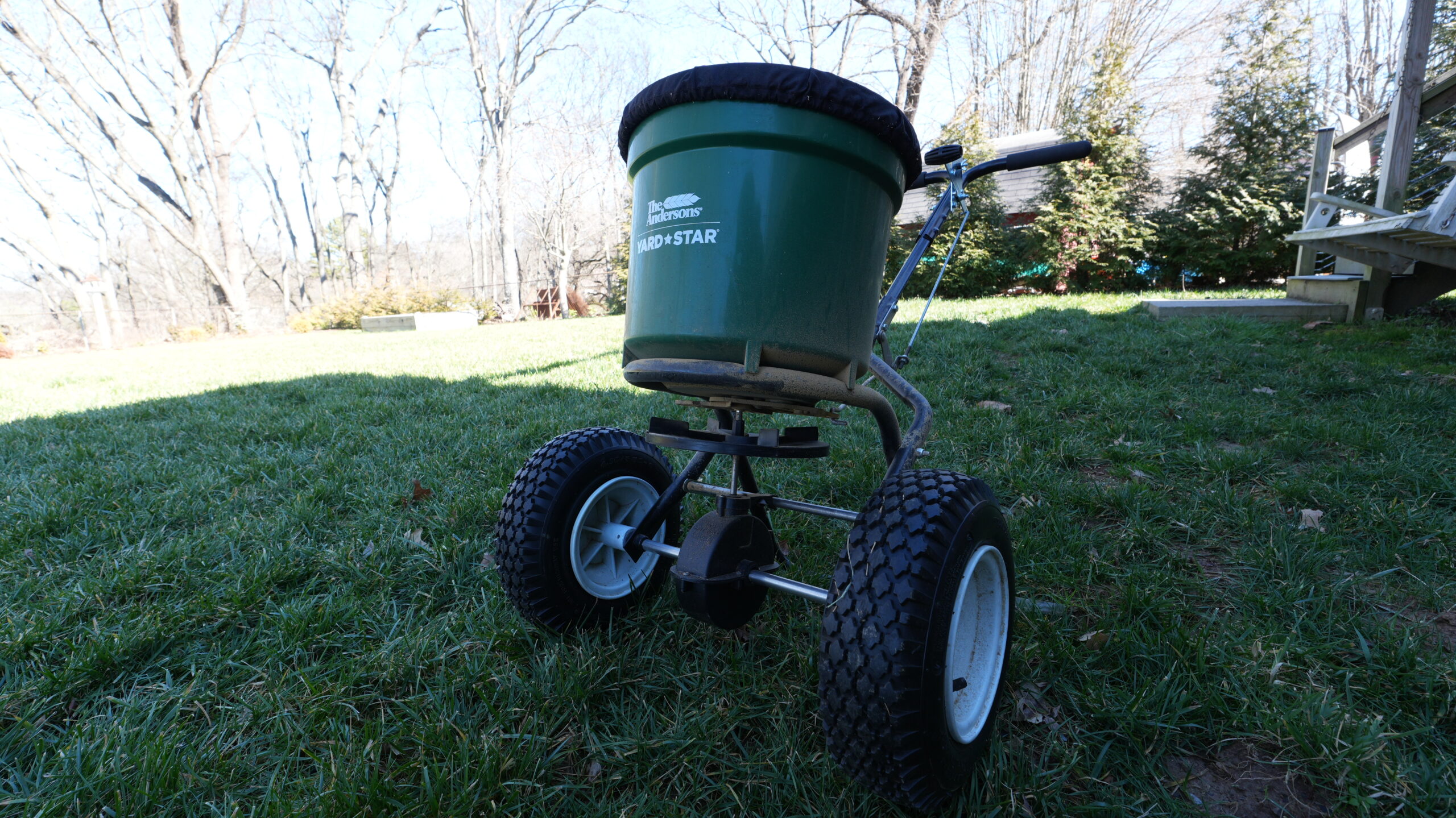
Benefits of broadcast spreaders
One of the main benefits of using a broadcast spreader is the ability to cover a large area in a short amount of time. Because the material is flung out in a wide arc, a single pass with a broadcast spreader can cover a significant amount of ground. This makes broadcast spreaders a convenient choice for treating large lawns or gardens.
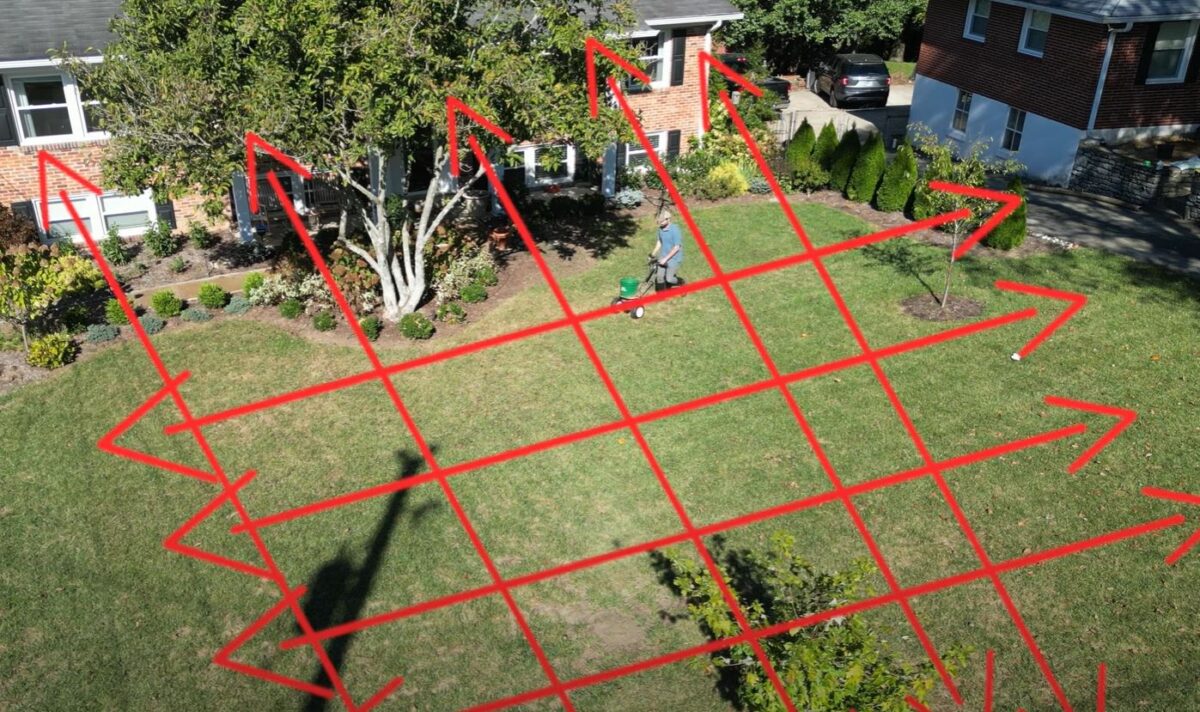
Another advantage of broadcast spreaders is their versatility. Many models are capable of handling a wide range of materials, including large seeds and pelletized fertilizers, which may not be suitable for drop spreaders. This makes broadcast spreaders a good choice for those who need to apply a variety of substances to their lawn or garden.
Drawbacks of broadcast spreaders
Despite their many benefits, broadcast spreaders do have some drawbacks compared to drop spreaders. One of the main limitations of broadcast spreaders is the risk of waste. Because the material is flung out in a wide arc, it is more susceptible to being affected by wind and other external factors, which can result in an uneven application and a significant amount of waste.
Another potential drawback of broadcast spreaders is their lack of precision. Because the material is released in a wide arc, it is more difficult to achieve a precise and even application compared to a drop spreader. This can be a problem for those who need to apply materials at a specific rate, such as fertilizers and pesticides.
Pros and cons of broadcast spreaders
Broadcast spreaders can help get the job done quickly, but you may miss a spot.
Pros of broadcast spreaders:
- Cover a large area
- Very customizable
- Can take just about any pellet size
Cons of broadcast spreaders:
- Hard to tell exactly where you’ve sprayed
- May cause you to put too much down or waste fertilizer
Overall, broadcast spreaders are a useful tool for quickly covering a large area with granular materials. They offer many benefits over drop spreaders, including a larger coverage area and versatility with different types of materials.
Best Broadcast spreaders
Scotts definitely owns the market when it comes to broadcast spreaders. They had one that was popular for a long time, but got feedback (we experienced it first hand) that the design was forcing a lot of the granules to go right into the wheels of the spreader. So they re-designed the spreader and got the new Elite spreader.

You can grab the Scott’s Elite Spreader right on Amazon for the best price.
Another slightly more expensive option is The Andersons Yard Star – which is a bigger, badder version of the Scotts Broadcast Spreader.
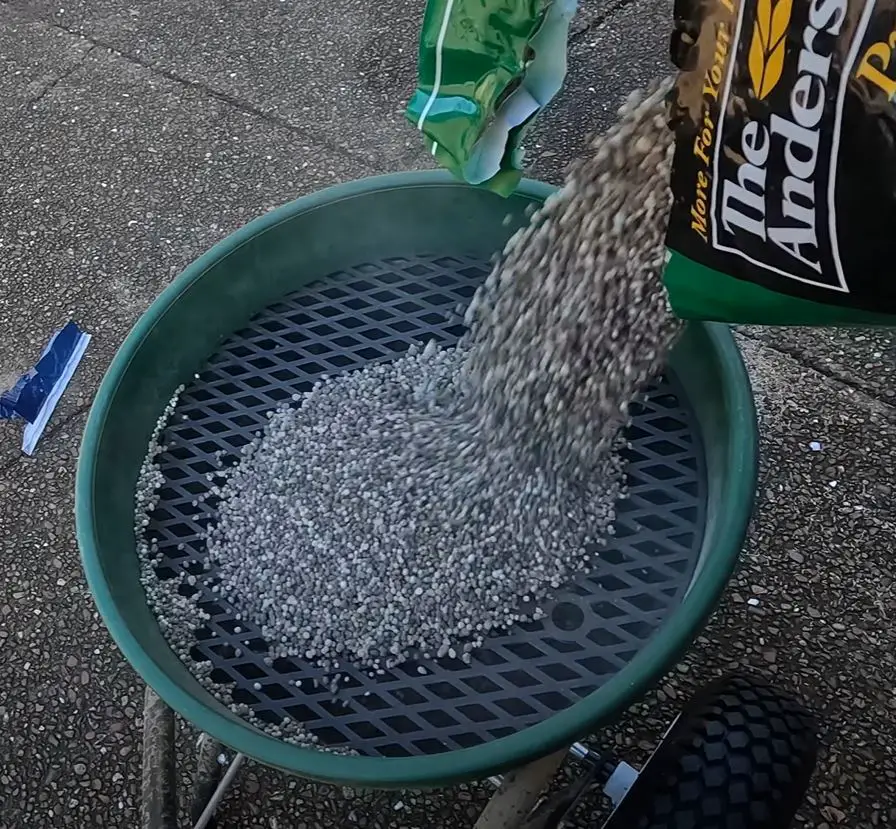
Choosing The Right Spreader: Broadcast vs Drop
Choosing the best spreader for your lawn can be confusing, but luckily the stakes aren’t very high. To make the right choice, it is important to consider the size and shape of your lawn, the type of material you will be spreading, and your budget and frequency of use.
Yard Size and shape
One of the first things to consider when choosing a spreader is the size and shape of your lawn. If you have a large, flat lawn, a broadcast spreader may be the choice that allows you to move the fastest. Because they operate with such imprecision, they ensure that you at least get some fertilizer or seed over most of your yard
On the other hand, if you have a small or irregularly shaped lawn, a drop spreader may be a better choice. This is great for “Type A” people who want to make sure everything is Even Steven when covering their yard in an expensive fertilizer.
These are great for the overseeding time of year.
Material size
Another important factor to consider is the type of material you will be spreading. If you plan to spread large seeds or pelletized fertilizers, you will need to choose a spreader that is capable of handling these types of materials. Some broadcast spreaders are equipped with a larger hopper and more powerful motors, making them suitable for handling these types of materials. Drop spreaders, on the other hand, may not be able to handle large seeds or pelletized fertilizers, as they may not fit through the holes or slots in the bottom of the spreader.
Cost implications
In addition to the size and shape of your lawn and the type of material you will be spreading, you should also consider your budget and frequency of use when choosing a spreader. If you only plan to use the spreader a few times a year, a lower-priced model may be fine. However, if you plan to use the spreader more frequently or if you have a large lawn, it may be worth investing in a higher-quality spreader that is built to last, like the Andersons Yard Star.
Final wrap up: Drop vs Broadcast Spreaders
In summary, drop spreaders and broadcast spreaders are both distribute your fertilizer or seed across your lawn. Drop spreaders are more precise, but have a limited coverage area and may not be suitable for all types of materials. Broadcast spreaders are able to cover a large area quickly and are versatile enough to handle a wide range of materials, but have a higher risk of waste,
Why we started this site
We started The Lawn Review out of frustration. We couldn’t find clarity around what type of products were actually good and reliable. All the fertilizers we tried didn’t work. We ended up with a dying lawn, wasted time, and wasted money.

So we started buying and reviewing lawn tools and figuring out which ones were the best. And now we’ve moved onto actually keeping that lawn looking nice all year around.
We’ve spent thousands of hours building this content for people just like you and me – normal people.

